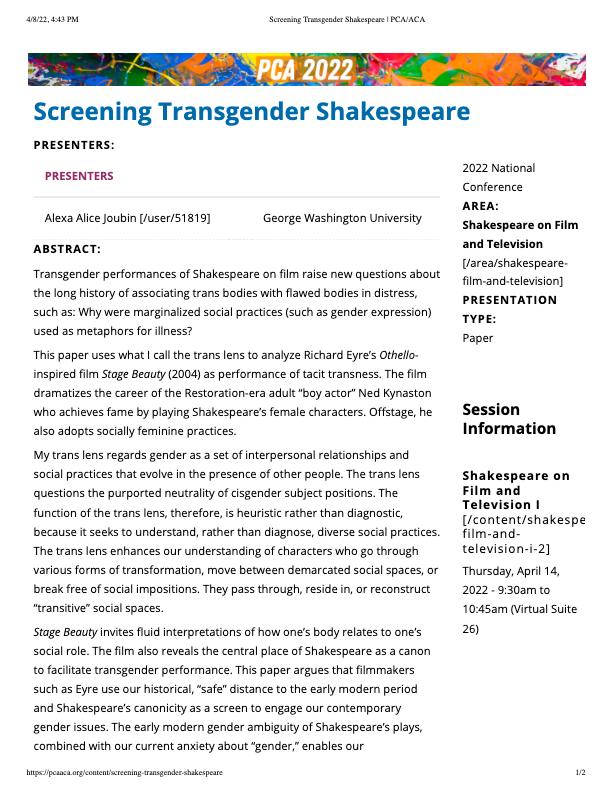Screening Transgender Shakespeare, Popular Culture Association National Conference
April 14, 2022 at PCA’s online conference
Transgender performances of Shakespeare on film raise new questions about the long history of associating trans bodies with flawed bodies in distress, such as: Why were marginalized social practices (such as gender expression) used as metaphors for illness? How might we counter the harmful legacy of this history?
This paper uses what I call the trans lens to analyze Richard Eyre’s Othello-inspired film Stage Beauty (2004) as performance of tacit transness. The film dramatizes the career of the Restoration-era adult “boy actor” Ned Kynaston who achieves fame by playing Shakespeare’s female characters. Offstage, he also adopts socially feminine practices. Towards the end of the film, Kynaston begins to identify as we might now call “cisgender” which refers to people whose gender practice happens to be congruent with the genders given to them by their society.
My trans lens regards gender as a set of interpersonal relationships and social practices that evolve in the presence of other people. The trans lens questions the purported neutrality of cisgender subject positions. The function of the trans lens, therefore, is heuristic rather than diagnostic, because it seeks to understand, rather than diagnose, diverse social practices. The trans lens enhances our understanding of characters who go through various forms of transformation, move between demarcated social spaces, or break free of social impositions. They pass through, reside in, or reconstruct “transitive” social spaces.
Stage Beauty invites fluid interpretations of how one’s body relates to one’s social role. The film also reveals the central place of Shakespeare as a canon to facilitate transgender performance. This paper argues that filmmakers such as Eyre use our historical, “safe” distance to the early modern period and Shakespeare’s canonicity as a screen to engage our contemporary gender issues. The early modern gender ambiguity of Shakespeare’s plays, combined with our current anxiety about “gender,” enables our contemporary culture to give the characters’ genders more flexible interpretations.
